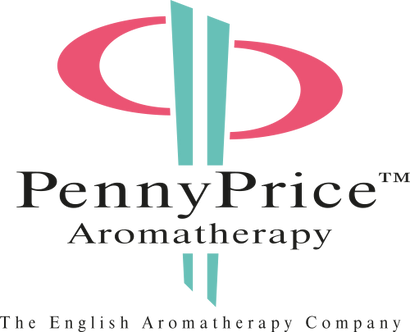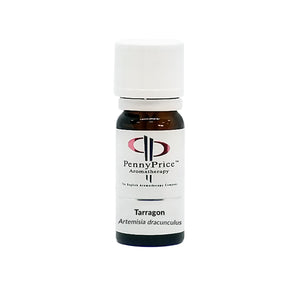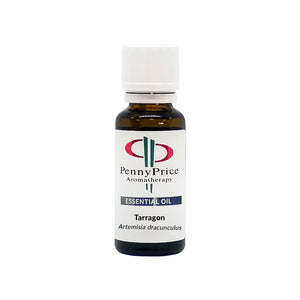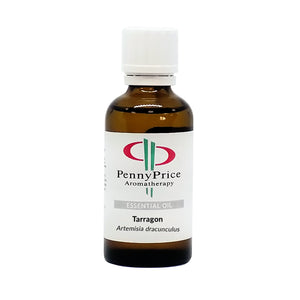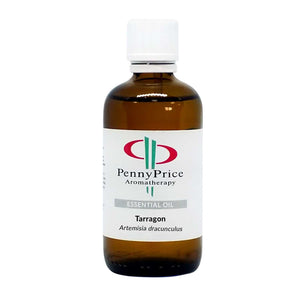Latin Name: Artemisia dracunculus
Plant Family: Asteraceae
Extraction: Distillation of the leaves
Tarragon is distilled from the leaves and produces oil that has a sweet, spicy-green scent. Tarragon is invigorating and may help maintain a healthy digestive system.
It's a perennial herb with smooth narrow leaves, an erect stem up to 1.2 meters tall, and small yellow-green, inconspicuous flowers. Native to Europe, southern Russia and western Asia. Now cultivated worldwide, especially in Europe and the USA. The oil is mainly produced in France, Holland, Hungary and the USA.
The name is thought to derive from an ancient use as an antidote to the bites of venomous creatures and rabid dogs - the word dracunculus actually means “Little Dragon” and tarragon literally means that.
Find out more in Penny's Blog - Unusual Essential Oils - Tarragon
Pure Essential Oil - Available in 10ml, 25ml, 50ml & 100ml.
Herbal & Folk Tradition
Tarragon tea was given to patients during the plague to purify and disinfect them from the inside out. It was also used to treat bites and stings from wild animals. Armenians used the herb to treat ulcers, while Europeans used it to stimulate appetite and improve digestion. In addition, the Chinese used tarragon as a traditional medicine for a range of problems due to its antiviral and antispasmodic properties, the ancient Greeks used tarragon to treat toothaches and Prehistoric Iranian healers used it to increase appetite levels and as an anticonvulsant.
Tarragon was favoured by the maharajahs of India who took it as a tisane, and in Persia it was used to induce appetite. Today, the leaf is commonly used as a domestic herb, especially with chicken or fish, and to make tarragon vinegar.
Blends With
Tarragon essential oil is a Top Note and blends labdanum, galbanum, lavender, oakmoss, vanilla, pine and basil, and can add a special ‘something’ to an ordinary blend.
Safety Data
Estragon (estragole or methyl chavicol can be an irritant so please use Tarragon essential oil in moderation only. Used in normal aromatherapy dilutions it is non-irritant and non-sensitising. However please avoid it during pregnancy.
Tarragon Essential Oil Safety Data Sheet
Cautions
- Keep essential oils out of the reach of children at all times.
- Never remove a fixed dropper from a bottle of essential oil.
- Do not apply directly to the skin without professional advice.
- Do not ingest without professional advice. If oil is accidentally ingested, seek immediate medical assistance.
- Do not exceed stated doses.
- If splashed in the eyes, dab gently with olive oil on cotton wool. Water does NOT carry or dissolve essential oil.
- Remove essential oil from the hands by washing thoroughly with a mild detergent. This prevents transference to other parts of the body.
- Do not assume that essential oils have the same properties as the plant from which it has been derived
How to Use
Essential oils are very powerful and should be used with caution. Here are a few tips that you may find useful, although we advise that you consult a fully qualified, registered aromatherapist who will be able to advise you on the safe methods of use. Why not give us a ring at 01455 251020 or email [email protected] if you are unsure we will be happy to help.
Inhalation
Undiluted essential oils may be inhaled from a tissue or a pillow (4-6 drops). Alternatively, they can be inhaled from a bowl of hot water (3 or 4 drops) or a diffuser (see table below), but avoid this if asthmatic. Never inhale essential oils directly from the bottle.
Shampoo and Bath Foam
Create unique aromatherapy bath foams or shampoos by mixing up to 30 drops of your own essential oil blend into 100ml of a suitable bath foam base or shampoo base.
Skincare Cream
Essential oils can be added to vegetable-based creams and then developed into facial products or topical creams. Do not add more than 15 drops of essential oil to 50ml of your base cream.
Pregnancy
Essential oils are best avoided during the first months of pregnancy. After the third month, many oils can be used safely and effectively. If in doubt, always consult a qualified aromatherapist. Find out more in our blog, Aromatherapy & Pregnancy
Bath, Massage, Vaporiser
See the table below, which gives the correct amounts to use depending on age, and a brief guide on how to use.
Download a printable version of our blending guidlines for you to keep here
Blending Guidelines
|
|
12+ Years
|
Child 2-12 Yrs
|
Baby 0-2 Yrs
|
How to Use
|
|
Bath
|
4-6 drops in a vegetable carrier oil, lotion or detergent base
|
2-3 drops diluted in a small amount of white lotion or detergent base
|
1-2 drops diluted in a small amount of white lotion or detergent base
|
Allow water to run into the bath, then add your blend and swish to disperse evenly for about 2 minutes
|
|
Massage
|
4-6 drops in 10-15ml of vegetable carrier oil
|
2-4 drops in 10ml lotion or vegetable carrier oil
|
2 drops in 10ml lotion or vegetable carrier oil
|
Massage your blend directly on the skin. Use very gentle strokes when massaging a baby.
|
|
Vaporiser
|
4-6 drops in a small amount of water (ideally distilled)
|
The subtle release of aromatic oils into the air induces relaxation or stimulation. Always follow the manufacturer’s instructions.
|
|
Diffuser
|
3-5 drops per 100ml of water (ideally distilled)
|
Please note a detergent base would be a soap base, bath foam base or a shampoo base for example.
You can see our selection of bases here.

